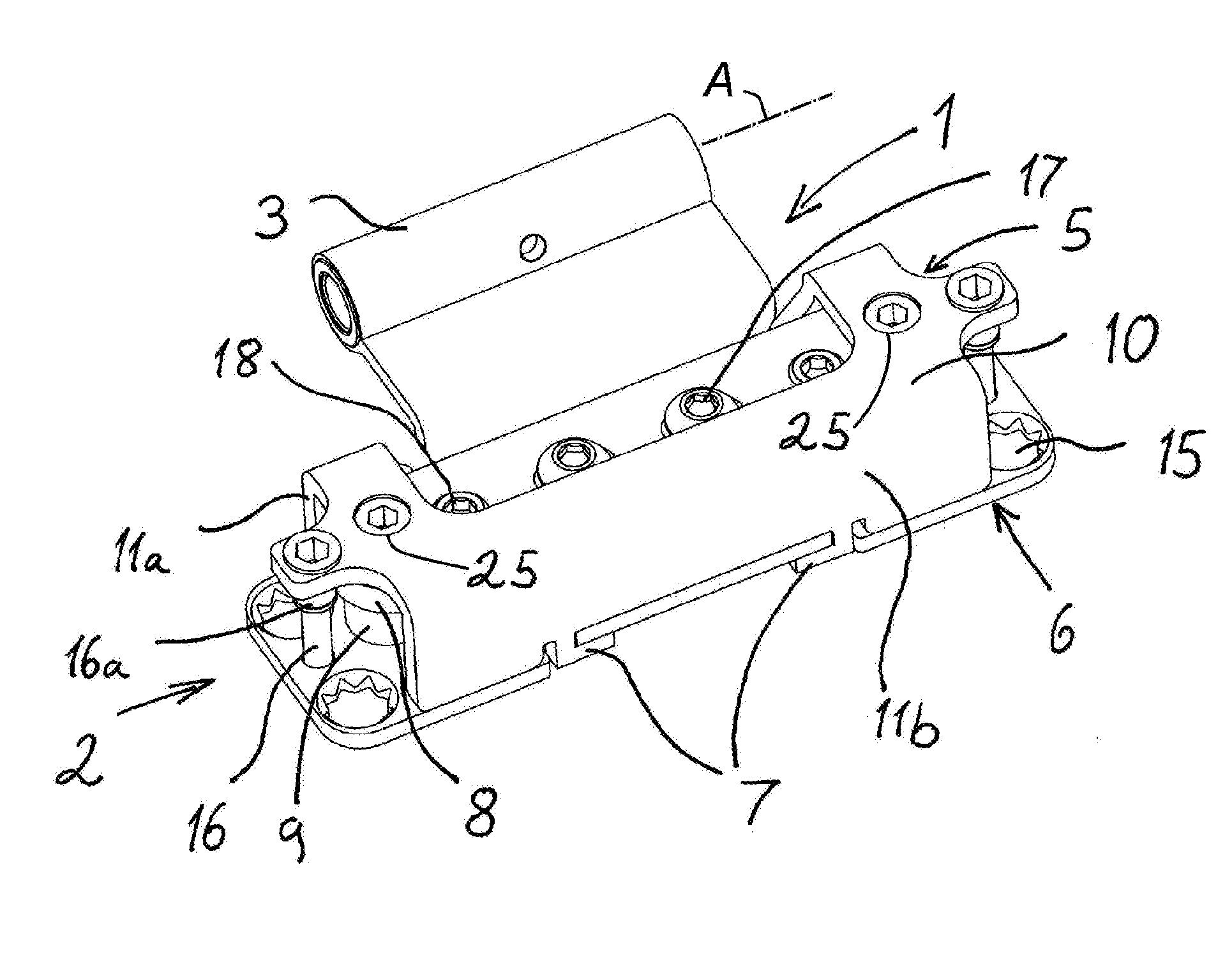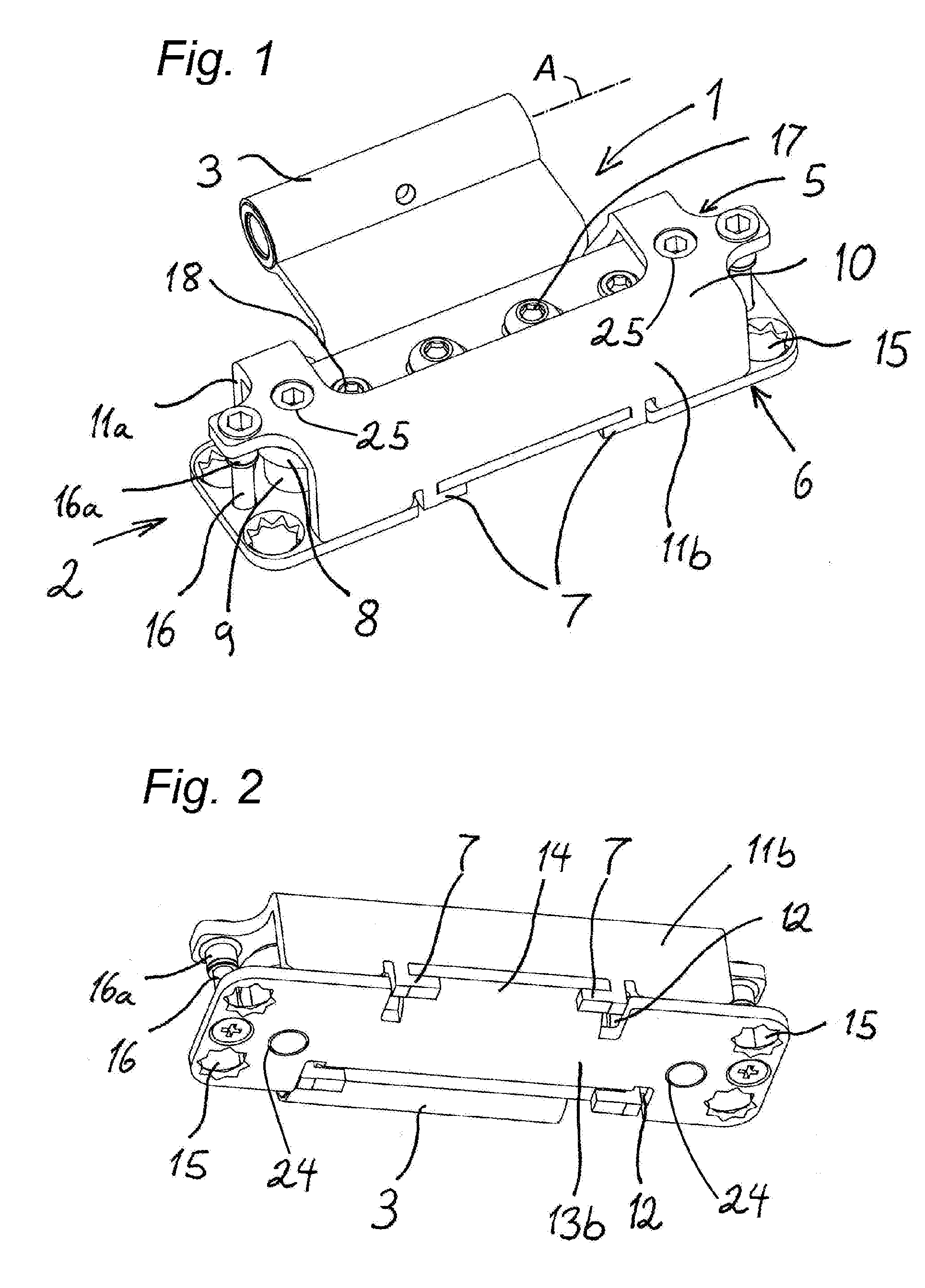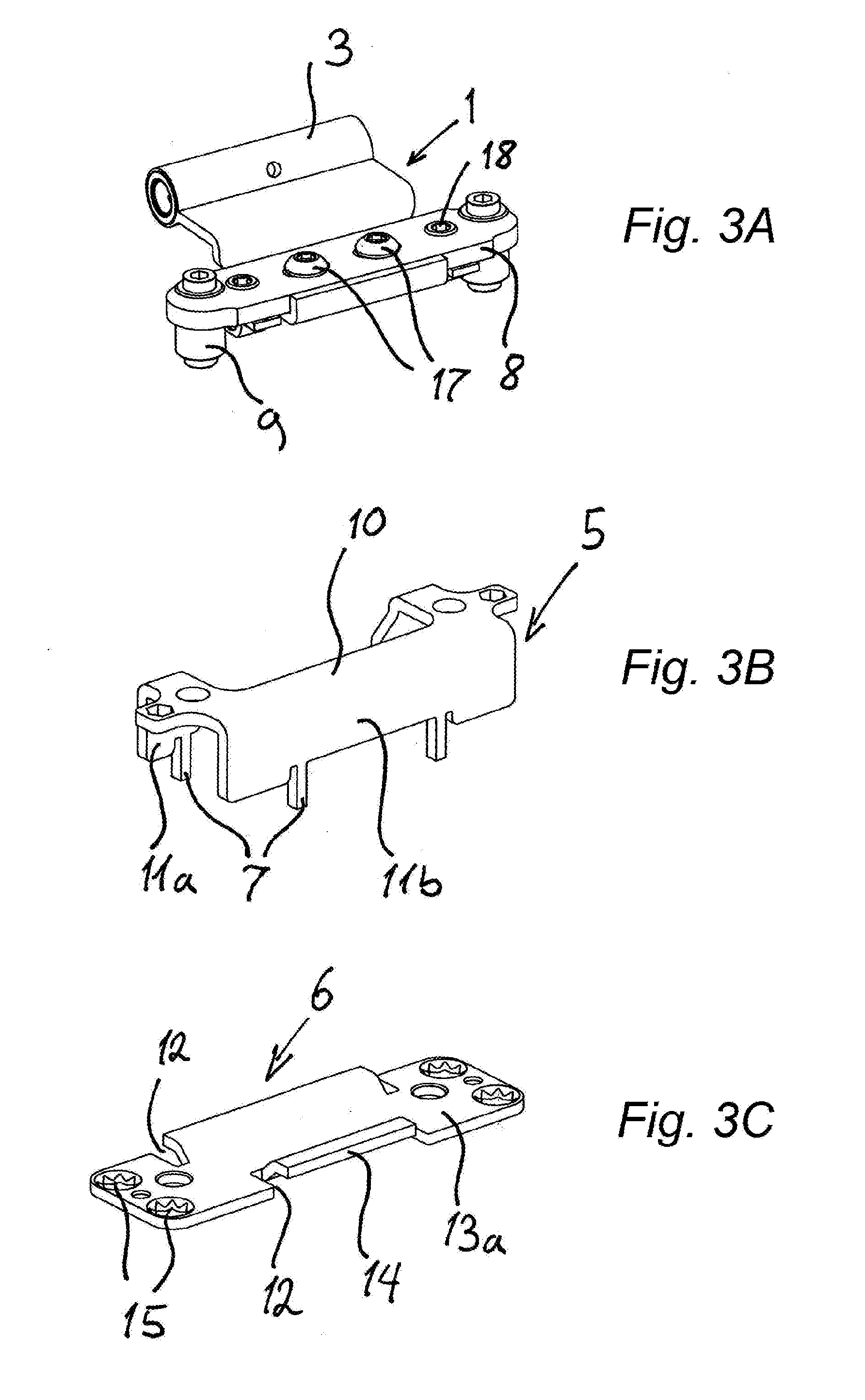Door hinge
- Summary
- Abstract
- Description
- Claims
- Application Information
AI Technical Summary
Benefits of technology
Problems solved by technology
Method used
Image
Examples
Embodiment Construction
[0037]As seen in FIG. 1 a first hinge leaf 1 is adjustably secured in a housing 2 and is rotatable about an axis A at a hinge knuckle 3 formed with a second hinge leaf 4 shown in FIGS. 6 and 7. FIGS. 1 and 3 show how a housing 5 formed of two sheet-metal parts 5 and 6. The part 5 is of one piece and generally U-shaped and the part 6 is flat and has planar faces 13a and 13b. FIGS. 3B and 3C show the two sheet-metal parts 5 and 6 separately, before assembly. When the two sheet-metal parts 5 and 6 are fitted together, tabs 7 unitarily formed on the top part 5 are bent over so that the two sheet-metal parts 5 and 6 are attached to one another in a positive-fit such that they cannot be separated without damage to the parts.
[0038]Before the two sheet-metal parts 5 and 6 are attached to one another during assembly, resulting in a permanent connection, the first hinge leaf 1 is inserted between the two sheet-metal parts 5 and 6 along with a rigid cast-metal base plate 8. Here, the base plat...
PUM
 Login to View More
Login to View More Abstract
Description
Claims
Application Information
 Login to View More
Login to View More - R&D
- Intellectual Property
- Life Sciences
- Materials
- Tech Scout
- Unparalleled Data Quality
- Higher Quality Content
- 60% Fewer Hallucinations
Browse by: Latest US Patents, China's latest patents, Technical Efficacy Thesaurus, Application Domain, Technology Topic, Popular Technical Reports.
© 2025 PatSnap. All rights reserved.Legal|Privacy policy|Modern Slavery Act Transparency Statement|Sitemap|About US| Contact US: help@patsnap.com



